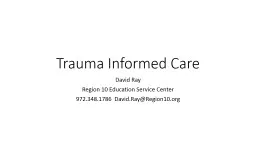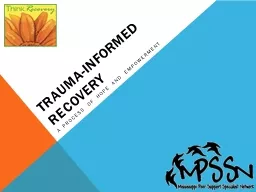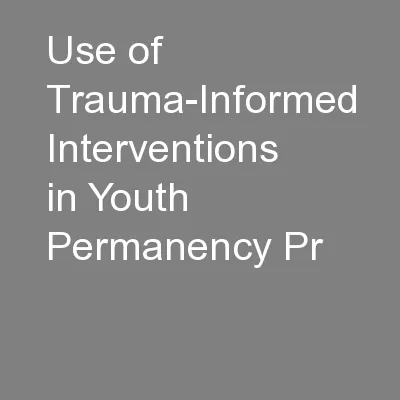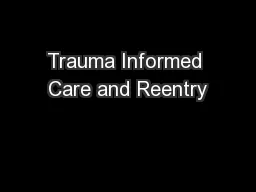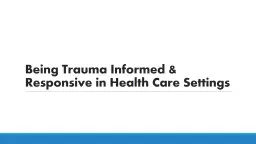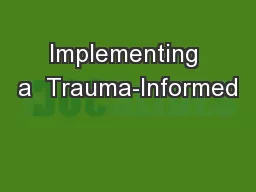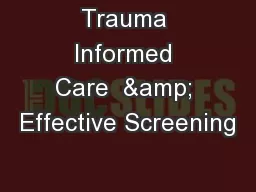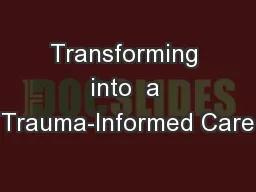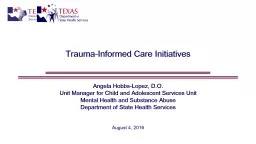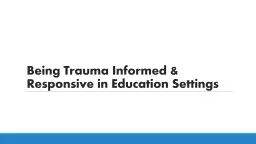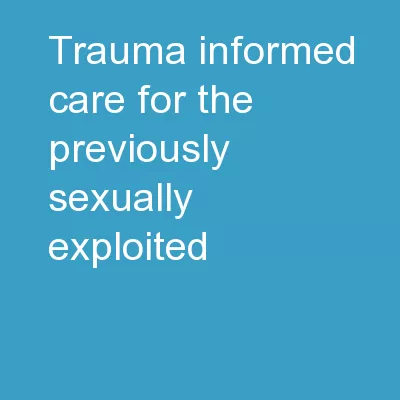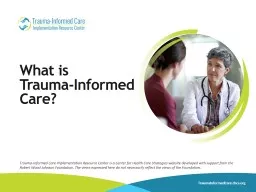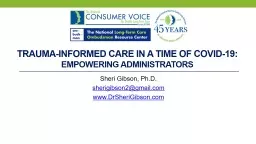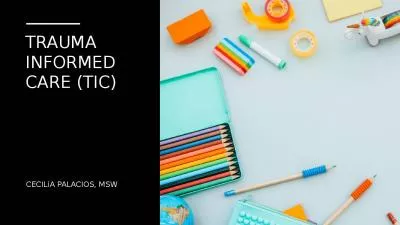PPT-Trauma Informed Care David Ray
Author : sherrill-nordquist | Published Date : 2018-11-06
Region 10 Education Service Center 9723481786 DavidRayRegion10org Overview How to ask questions Overview Treating Traumatic Stress in Children and Adolescents 101
Presentation Embed Code
Download Presentation
Download Presentation The PPT/PDF document "Trauma Informed Care David Ray" is the property of its rightful owner. Permission is granted to download and print the materials on this website for personal, non-commercial use only, and to display it on your personal computer provided you do not modify the materials and that you retain all copyright notices contained in the materials. By downloading content from our website, you accept the terms of this agreement.
Trauma Informed Care David Ray: Transcript
Download Rules Of Document
"Trauma Informed Care David Ray"The content belongs to its owner. You may download and print it for personal use, without modification, and keep all copyright notices. By downloading, you agree to these terms.
Related Documents

